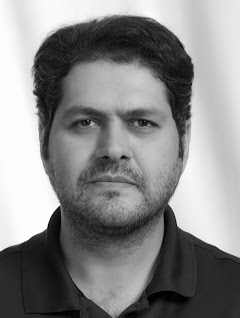Beat
I mostly cover politics, because that’s where Iran makes the news. I also shoot daily life, art, sports, entertainment, and financial stories.
One Shot

“My favourite picture was taken during a mass funeral ceremony for victims of the conflict between Lebanon’s Hezbollah and Israel in 2006. I was standing with some other photographers on the corner of a cemetery in Qana, southern Lebanon, when I saw a Hezbollah flag waving in the wind with some nice sunlight shining on it. I thought that it would be a good image if a Lebanese man came up and put a Lebanese flag next to it. After less than a minute, a man with two flags in his hands came up and put one of them just in the place where I was hoping he would. I will never forget that.”
Profile
I was taught photography in the college of art and architecture of Iran’s Azad University in Tehran.
I started working for Reuters in 1999 and always looked forward to an assignment abroad. One day in 2006, I was on vacation when Tehran’s chief photographer Caren Firouz called and told me that I should try to get my visas for Syria and Lebanon to help the Reuters team cover the conflict between Lebanon’s Hezbollah and Israel. That was big news for me, but I was a little bit worried because I had never had an experience like that before.
In Lebanon I learnt the real meaning of teamwork. In the south of the country I was working for a big team including photographers, cameramen and correspondents, and I learnt to hold back from a picture if it was something that my team decided not to cover. Working in the north, I learnt that, wherever I am, I have to work and explore stories for my agency, because there is always a photo somewhere or other waiting to be captured.
One assignment about women wearing white chadors (traditional Islamic garments) left a big mark on me. I asked Reuters to do this assignment in black and white, and it was a big deal for me because I had to show that I could do it well. After my story was published, I thought it was okay, because it was my first black and white set of pictures, and it ended up being selected as the “best story of the week”.
I have felt war with all my senses; when I was just a 6-year-old child, I lived in the border city of Abadan, a centre of conflict during the Iran-Iraq war. I am always interested in war and people who do not want it but they have to live with it.
When I take pictures, I think of light, colour and contrast, and I think about my story and story of the people and places around me.
The best images can be found in places where we think there is nothing to shoot.
I have a lot of respect for Kaveh Golestan, a BBC cameraman who was killed during the war in Iraq, and the photographer Mohammad Eslami Rad. They taught me that a good picture doesn’t come from a camera, a good picture comes from your mind, eyes and your outlook on world.
Behind the Scenes

